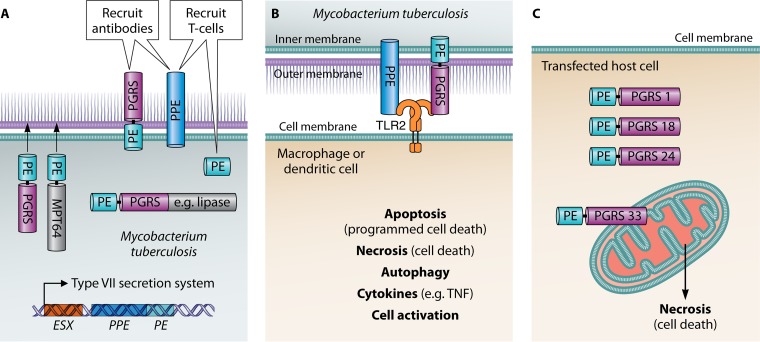FIG 1.
Schematic showing known PE/PPE bacterial ligands and how they may interact with mycobacterial or host receptors. (A) PE-PGRS and PPEs are found in the outer membrane matrix of mycobacteria, and they can elicit cross-reactive antibodies. The PPEs and PEs can elicit T cells. PEs can act like chaperones directing PGRS and other heterologous proteins like MPT64 to the outer membrane of mycobacteria. Some PE-PGRSs also have a domain at the C terminus, such as a lipase, which has enzymatic activity. PPEs and PEs often interact as “couplets” and are found associated with ESX domains in mycobacterial genes. The type VII secretion system is known to secrete PE/PPEs as well as other antigens. (B) PE-PGRS and PPEs interact with TLR2 receptor on macrophages and dendritic cells. This binding has been shown to cause apoptosis, necrosis, autophagy, release of cytokines like tumor necrosis factor alpha (TNF-α) and cell activation. (C) Necrosis of the cells resulting from the interaction of PE-PGRS 33 with mitochondria. Other PE-PGRSs like PE-PGRS 1, 18, and 24 do not interact with mitochondria.

